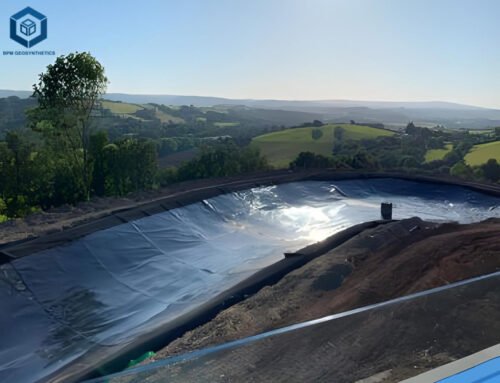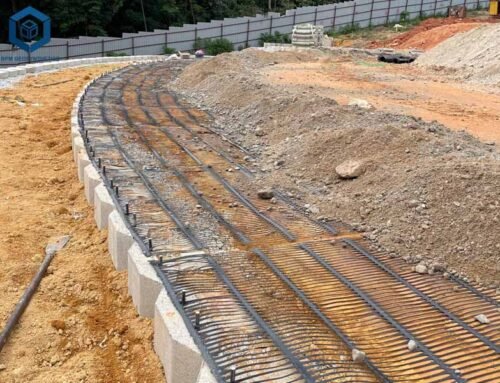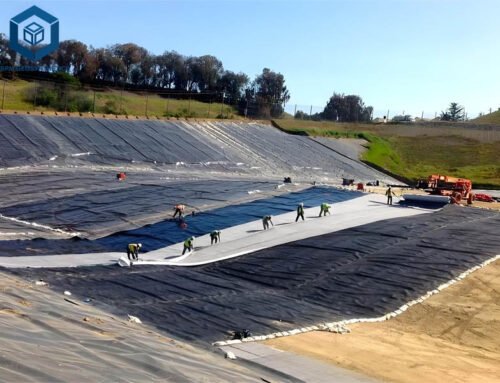Geotextiles have become indispensable in modern civil engineering and environmental projects, offering solutions for soil stabilization, erosion control, and filtration. Among the various geotextile products available, the geotextile 4m from BPM Geosynthetics stands out due to its exceptional strength, durability, and versatility. This high-performance material is widely used in a range of applications, including road construction, landfill liners, and coastal protection projects. In this article, we will delve into the specific features and benefits of the geotextile from BPM Geosynthetics, highlighting its contributions to enhancing project efficiency and environmental sustainability.
1. Definition Of 4m Geotextile
Geotextile, also known as geotextile, is a water-permeable geosynthetic material made of synthetic fibers through needle punching. It is divided into woven and non-woven types. Geotextile has excellent filtering, isolation, reinforcement, and protection functions. Additionally, it has high tensile strength, good permeability, and resistance to high temperatures, freezing, aging, and corrosion. Because the material is light and soft, it is easy to transport, lay, and construct.
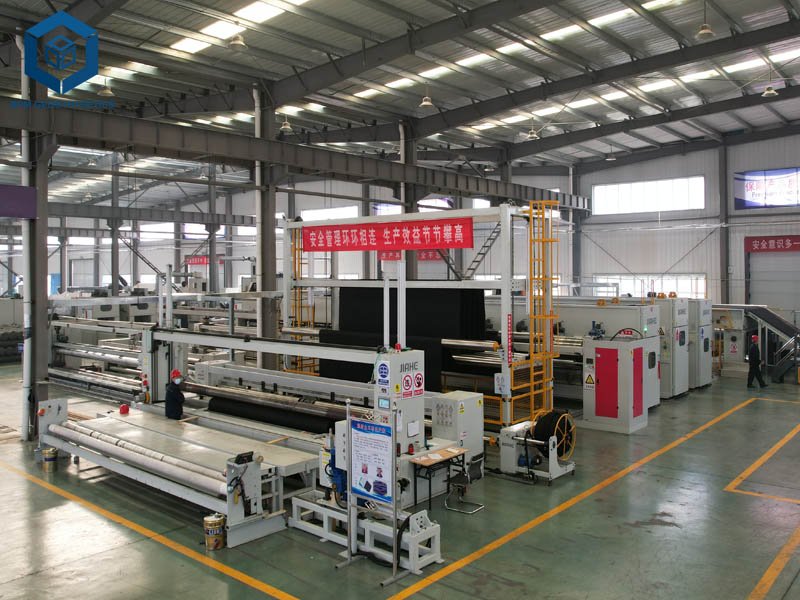

2. Production Process Of 4m Geotextile
2.1 Raw material selection
2.1.1 Polypropylene (PP):
- Features: Light, corrosion-resistant, suitable for most geotechnical applications.
- Application: Widely used in agriculture, horticulture and soil protection.
2.1.2 Polyester (PET):
- Features: High strength, good durability, anti-ultraviolet and chemical corrosion.
- Application: Suitable for civil engineering projects with high strength requirements, such as roads and water conservancy projects.
2.2 Production process
2.2.1 Raw material preparation:
Use polypropylene particles or other synthetic fibers as raw materials.
2.2.2 Fiber web:
The added polypropylene particles are extruded into continuous fiber filaments. These filaments are then stretched and shrunk. Subsequently, the fibers are cut into staple fibers. These fibers are placed in the machine for flattening. Afterward, the stretched tows are separated by the oscillating wire. Finally, they are evenly laid on the mesh curtain of the web forming machine. This process forms a fiber web with a certain gram weight and thickness.
2.2.3 Needle punching reinforcement:
The fiber web undergoes needle punching for reinforcement. This process is divided into two steps: pre-needling and main needling. Pre-needling targets the fluffy, weak fiber net from web laying. Main needling further strengthens this fiber net.
2.2.4 Post-treatment:
The geotextile, after needle punching reinforcement, undergoes heat setting. This heating stabilizes the fiber cross-linking points. It enhances dimensional stability and deformation resistance. Following heat setting, post-treatment processes are applied. These include singeing and filter pressing. They improve surface finish and air permeability.
2.2.5 Finished product processing:
The processed polyester staple fiber geotextile is trimmed to remove irregular edge parts. This ensures accurate finished product size. Next, chemical oil treatment is carried out as needed. This makes the geotextile smoother and improves micropore distribution. Finally, it is rolled and packed for storage.
2.3 Quality control
2.3.1 Influence of raw materials
High-quality fiber raw materials are essential for high-performance geotextiles. The strength, abrasion resistance, and aging resistance of the fiber determine its mechanical properties and service life. Therefore, BPM strictly controls raw material selection to ensure fiber quality meets relevant standards.
2.3.2 Production process
From carding to web laying and needle punching, each link requires delicate operation. Process parameters such as needle punching density affect its strength. BPM adopts advanced production technology and strict quality control to ensure high-quality products.
2.3.3 Environmental factors
During storage and transportation, geotextiles may be affected by environmental factors. Temperature, humidity, and light can lead to fiber aging and strength loss. Therefore, BPM takes protective measures to ensure stable quality during these stages.
3. Geotextile 4mm main characteristics
Basic characteristics of 4m geotextile:
3.1. Water permeability
Staple fiber geotextile has good water permeability. This allows water to pass through while preventing soil particle loss. As a result, it is highly effective in drainage systems and soil protection. Moreover, its ability to manage water flow without compromising soil integrity makes it an ideal choice for various applications, including road construction, agricultural fields, and environmental projects. Additionally, the material’s durability and resistance to environmental factors further enhance its suitability for long-term use in critical infrastructure projects.
3.2. Filtration performance
Staple fiber geotextile effectively filters soil particles. This prevents their loss in water flow while allowing water and air to pass smoothly. Consequently, this maintains soil stability, making it an ideal choice for various applications such as drainage systems and slope protection. Moreover, the filtration capability of staple fiber geotextile ensures that the soil structure remains intact, preventing erosion and promoting healthy plant growth. Additionally, this feature enhances the overall performance of the geotextile, contributing to the longevity and effectiveness of the project.
3.3. Flexibility
Due to its structure and material properties, staple fiber geotextile has good flexibility. This allows it to adapt to complex terrain and irregular surfaces with ease. Consequently, it becomes highly convenient for construction and laying processes. Furthermore, the flexibility of the material ensures that it can conform to various shapes and contours, making it an ideal choice for applications in challenging environments. Additionally, this adaptability simplifies the installation process, reducing labor costs and time, which is particularly beneficial for large-scale projects.
3.4. Tear resistance
Staple fiber geotextile has good tear resistance. This allows it to withstand certain mechanical stress during construction. Avoiding damage is essential for its performance, as any tears or punctures can compromise the material’s effectiveness. Moreover, the high tear resistance of staple fiber geotextile ensures that it remains intact and functional even under harsh conditions, making it a reliable choice for various industrial applications. Additionally, this characteristic enhances the longevity of the geotextile, providing lasting protection and stability to the projects in which it is used.
3.5. Durability
Staple-fiber geotextiles have a certain degree of durability. They can resist the influence of ultraviolet rays, chemicals, and environmental factors. Consequently, this makes them suitable for long-term use in various industrial applications. Furthermore, their resistance to UV radiation ensures that the material does not degrade quickly under prolonged exposure to sunlight, maintaining its structural integrity over time. Additionally, the chemical resistance of staple-fiber geotextiles allows them to perform well in environments with high acidity or alkalinity, making them versatile and reliable for diverse projects.
3.6. Economical
The relatively low production cost makes staple-fiber geotextiles an economical choice. This affordability is particularly advantageous for large-scale applications, where budget constraints are often a significant concern. Furthermore, the cost-effectiveness of staple-fiber geotextiles does not compromise their performance, making them a practical solution for various industrial projects. Additionally, the economic viability of these materials allows for broader implementation in infrastructure development and environmental protection initiatives, ultimately contributing to more sustainable and efficient construction practices.
3.7. Environmentally friendly
Many staple-fiber geotextile materials are recyclable, which can reduce the impact on the environment and meet the needs of sustainable development. Consequently, this attribute makes them an attractive option for environmentally conscious projects and industries. Moreover, the recyclability of these materials promotes a circular economy by enabling the reuse of resources, thereby minimizing waste and conserving natural resources. Additionally, the ability to recycle staple-fiber geotextiles aligns with global sustainability goals and regulations, further encouraging their adoption in various applications.
3.8. Easy to construct
Staple-fiber geotextiles are light in weight, easy to handle and lay. This can improve construction efficiency and reduce labor costs significantly. Consequently, the ease of handling and laying these materials simplifies the installation process, making it more streamlined and less time-consuming. Moreover, the lightweight nature of staple-fiber geotextiles minimizes the physical strain on workers, contributing to a safer working environment. Additionally, this characteristic allows for quicker project completion, which is particularly beneficial for large-scale applications where time and cost efficiency are critical factors.
3.9. Anti-aging
Under appropriate environmental conditions, staple-fiber geotextiles usually have good anti-aging properties. This ensures their stability in long-term applications, making them a reliable choice for various projects. Furthermore, the anti-aging characteristics of these materials mean that they can withstand prolonged exposure to elements such as sunlight, moisture, and temperature fluctuations without significant degradation. Additionally, this durability reduces maintenance costs and extends the service life of the geotextiles, contributing to more efficient and cost-effective construction solutions.
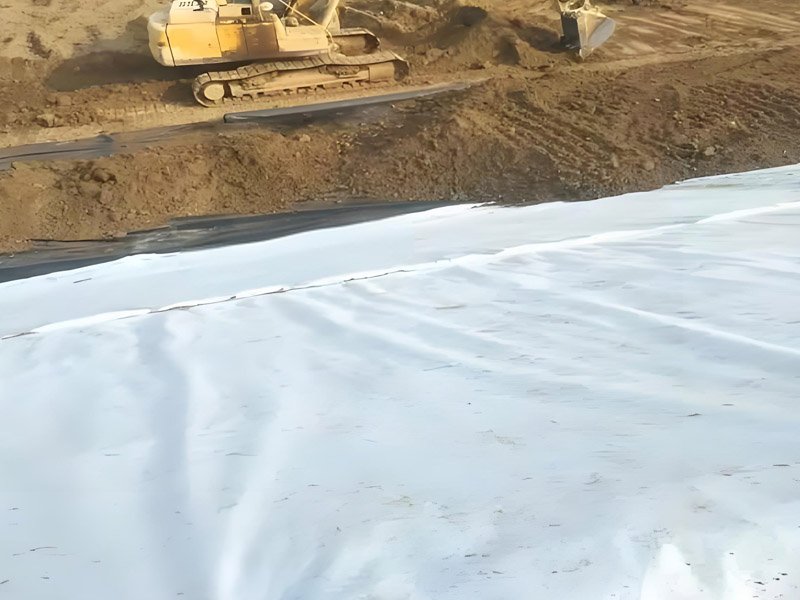
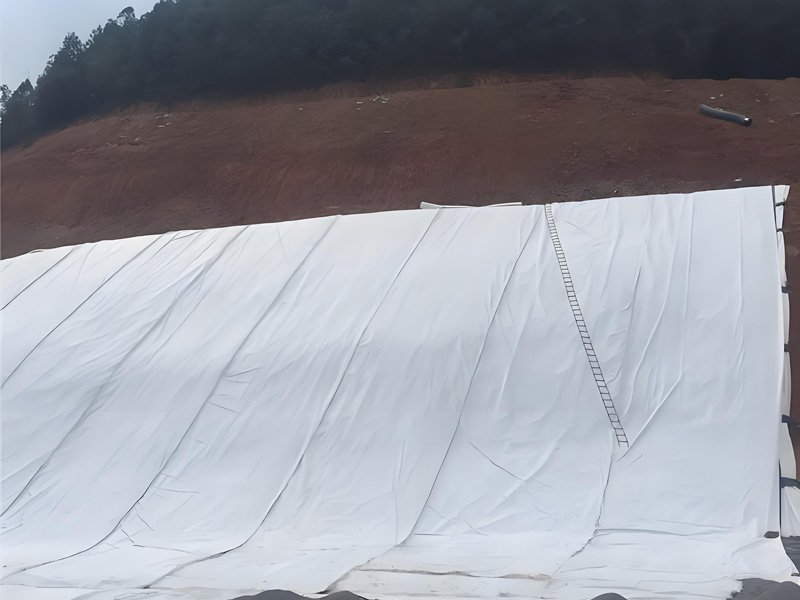
4. What Are The Application Projects Of Geotextile 4m?
Geotextiles, particularly those with a width of 4 meters, are extensively used in various industrial projects due to their versatility and durability. Here are some key application projects where geotextiles play a crucial role:
4.1 Road Construction and Maintenance:
- Subgrade Reinforcement: Geotextiles are used to reinforce the subgrade, improving the load-bearing capacity and reducing settlement.
- Pavement Protection: They act as a barrier between different layers of the road to prevent the mixing of materials and extend the life of the pavement.
- Erosion Control: In areas prone to soil erosion, geotextiles help stabilize the soil and reduce sediment runoff.
4.2 Railway Construction:
- Ballasted Track Stabilization: Geotextiles are placed beneath ballasted tracks to prevent the loss of fine particles and maintain track stability.
- Subgrade Protection: They protect the subgrade from moisture infiltration and mechanical wear.
4.3 Hydraulic Engineering:
- Erosion Control on Slopes: Geotextiles are used on riverbanks and slopes to control erosion and stabilize the soil.
- Filter Layers: They serve as filter layers in drainage systems to prevent soil particles from entering drains while allowing water to pass through.
4.4 Environmental Projects:
- Landfill Liners: Geotextiles are used as liners in landfill sites to prevent leachate from contaminating the surrounding environment.
- Retaining Walls: They provide reinforcement for retaining walls, ensuring structural integrity and preventing soil erosion.
4.5 Civil Engineering:
- Foundation Reinforcement: Geotextiles are used to reinforce foundations, improving load distribution and reducing the risk of settlement.
- Drainage Systems: They form part of drainage systems in civil engineering projects, ensuring efficient water flow and preventing soil erosion.
4.6 Coastal and Marine Works:
- Shoreline Protection: Geotextiles help protect shorelines from wave action and erosion.
- Aquaculture Ponds: They are used in the construction of aquaculture ponds to prevent seepage and ensure water quality.
4.7 Mining Operations:
- Tailing Dams: Geotextiles are used in the construction of tailing dams to prevent seepage and environmental contamination.
- Slope Stabilization: They help stabilize mine slopes and prevent landslides.
4.8 Agricultural Applications:
- Soil Erosion Control: Geotextiles are used in agricultural settings to control soil erosion and improve irrigation efficiency.
- Greenhouse Construction: They are employed in the construction of greenhouse structures to provide support and protection.
5. Summary
In conclusion, geotextiles, particularly those with a width of 4 meters, play an integral role in various industrial projects due to their versatility and durability. From road construction and railway stabilization to environmental protection and coastal works, these materials offer unmatched benefits in terms of soil reinforcement, erosion control, and drainage efficiency. BPM Geosynthetics stands out as a leading provider of high-quality geotextiles, ensuring that each project receives the best material for optimal performance and longevity. With their commitment to innovation and sustainability, BPM Geosynthetics continues to be a trusted partner in the geosynthetic industry, contributing significantly to the success of numerous infrastructure and environmental projects worldwide.

